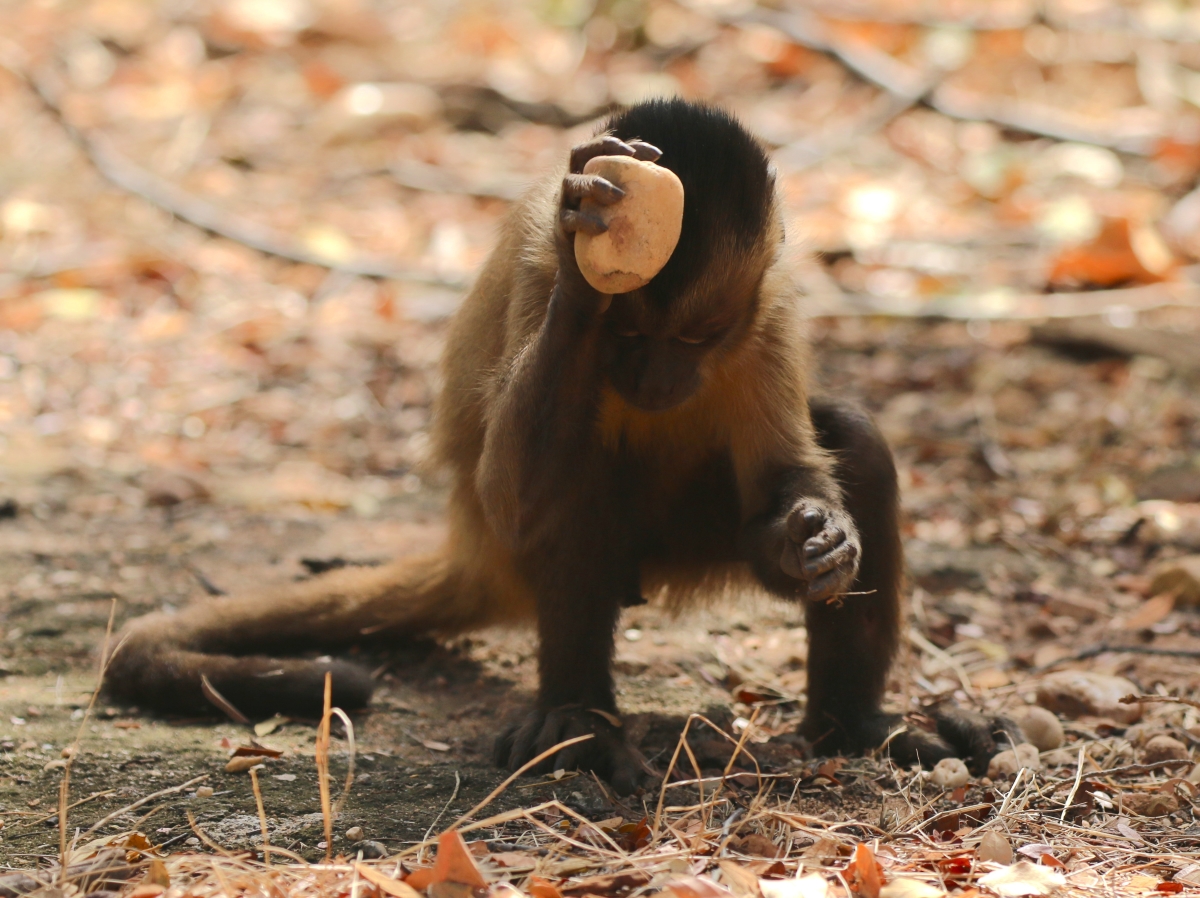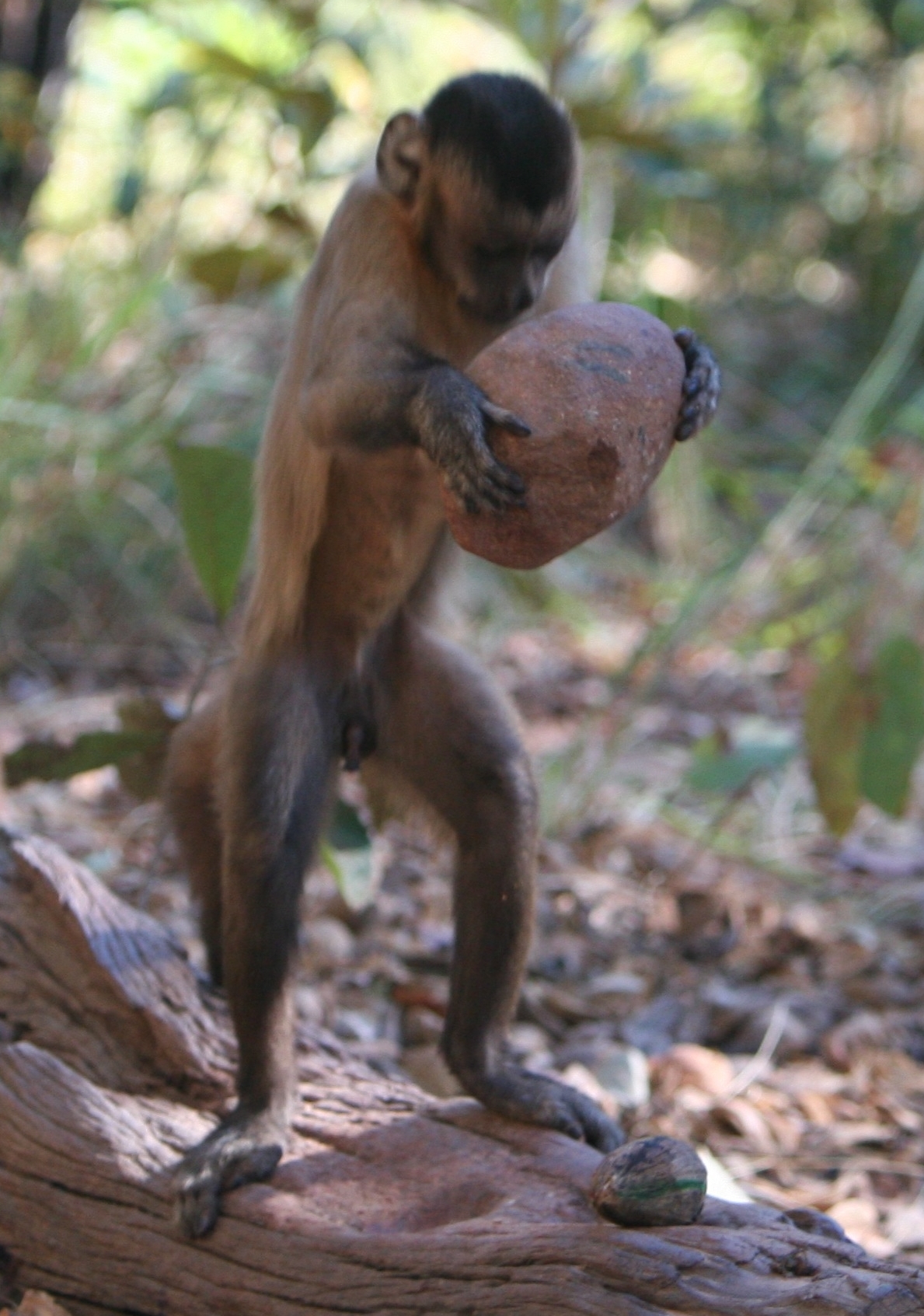Photos: Monkey Tool Use Points to a Simian 'Stone Age'
Working hard

Wild capuchin monkeys in Brazil have been using stone tools for at least 100 monkey generations, according to research by archaeologists and primatologists studying emerging "Stone Age" cultures in primates.
In a recent study, researchers described an excavation at a jungle "processing site," where capuchins select stones to break open the shells of cashews and other nuts.
The excavation found evidence that capuchins have been using stones as tools to open cashew nuts at the site for at least 700 years, or around 100 generations of capuchin monkeys. [Read full story about the tool-using monkeys]
Smart animal

The researchers observed modern capuchins in Serra da Capivara National Park in northeastern Brazil using heavy "hammer" stones to crack open the shell of a cashew nut placed on a larger "anvil" stones.
They also observed young monkeys learning to use stones as tools by watching the older monkeys prepare their food.
By examining the stones used by modern capuchins to open cashews, the researchers were able to identify stones that had been used as tools by previous generations of capuchins.
Taking a break

The latest research is the second recent study of an emerging monkey "Stone Age" by scientists at Oxford University's Primate Archaeology Project.
In June, Haslam and other scientists reported on archaeological tool use by wild macaques on islands on the west coast of Thailand.
The tool-using macaques were discovered by biologist Suchinda Malaivijitnond of Chulalongkorn University in Bangkok in 2004, while carrying out a biodiversity survey of the region after the Indian Ocean tsunami in 2004.
Repeated use

At Piak Nam Yai, primatologists observed macaques using stones to hammer open oysters against rocks on the beach at low tide.
Stones used as tools by the macaques have characteristic "use wear" marks, which can be seen in the photographs and 3D scans of macaque tools in the center of this image.
An excavation at one macaque food processing site at Piak Nam Yai found similar macaque stone tools dated to between 50 and 100 years old. Primatologist Michael Gumert thinks that the use of stones as tools by macaques may have evolved thousands or tens of thousands of years ago.
Fruits of the labor

The Primate Archaeology Project is also studying the use of stone tools by chimpanzees in West Africa.
Although chimpanzees and other apes often use sticks and twigs as tools to dig out food like termites, the use of stone tools is very rare. But, an archaeological study of three sites in the Ivory Coast, published in 2007, found evidence that chimpanzees up to 4,300 years ago used stones as tools to open nuts. [Related: Chimps Learned Tool Use Long Ago Without Human Help]
Ancient tools

Archaeologists think human ancestor species of hominids evolved a culture of stone tool use in Africa more than 2.6 million years ago.
Among the most primitive tools are the sharp rocks used for chopping and scraping known as "Oldowan pebble tools," which were first found at Tanzania's Olduvai Gorge by archaeologist Louis Leakey in the 1930s.
This image shows Oldowan pebble tools from the Melka Kunture archaeological site in Ethiopia that are about 1.7 million years old. [Related: Human Evolution: The Origin of Tool Use]
Evolution

By studying the evolution of stone tool use in primates like Brazil's capuchins and Thailand's macaques, the researchers at the Primate Archaeology Project hope to learn more about the evolution of tool use among our pre-human ancestors.
"As we build up a fuller picture of their evolutionary history, we will start to identify the similarities and differences in human behavior and that of other primates," Haslam wrote in a statement on the latest research.
Sign up for the Live Science daily newsletter now
Get the world’s most fascinating discoveries delivered straight to your inbox.
Tom Metcalfe is a freelance journalist and regular Live Science contributor who is based in London in the United Kingdom. Tom writes mainly about science, space, archaeology, the Earth and the oceans. He has also written for the BBC, NBC News, National Geographic, Scientific American, Air & Space, and many others.
